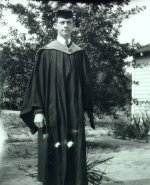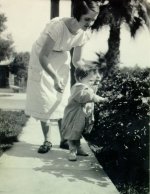
Linus Pauling as a Graduate and Postdoctoral Student at the California Institute of Technology, Part 2 (1924-1926)
1924
During the second term (January 2 to March 22), Pauling takes courses in potential theory and thermodynamics. He learns most in the physical chemistry seminar, which is based on Atomic Structure and Spectral Lines, the English translation of Sommerfeld’s book.
During the third term, he signs up for Paul Ehrenfest’s course, Physical Optics and Quantum Theory of Spectral Lines. Ehrenfest, a visiting professor at CIT, had done some important work on the quantum theory while he was in Europe.
In his research, Pauling interrupts his work on the complex fluorides to correct the paper by G.L. Clark on uranyl nitrate hexahydrate. This experience begins a practice that Pauling follows throughout the rest of his career: a critical reading of papers in the scientific journals often reveals errors, with the consequent duty of correcting them.
Pauling first meets G.N. Lewis during a trip to visit Jeffress and his wife in Berkeley. Pauling is deeply impressed by Lewis and the revitalized chemistry department he has formed.
In the summer, Noyes gets Pauling a research fellowship so that he can remain in Pasadena to complete his work on the complex fluorides.
Dickinson spends the academic year (1924-1925) at the Cavendish Laboratory in Cambridge, England, which leaves Pauling on his own, but in reality, after Pauling’s first two crystal-structure determinations, he works largely independently of Dickinson’s supervision.
In the fall, Linus and Ava Helen Pauling move into a one-room cottage on Craig Avenue (it is actually a garage that had been converted into a cottage by the addition of a bathroom).
For the November presidential election, the first in which Pauling is able to vote, he registers as a Republican (an action which shocks his wife, whose family, unlike Pauling’s, is politically liberal).
During his final year as a graduate student, Pauling’s research interests center on hematite, corundum, and beta-alumina. In his work on corundum and hematite, he is assisted by Sterling B. Hendricks, a Texan who had received his master’s degree from Kansas State in 1924. He becomes a close associate and personal friend of Pauling, and, with Dickinson away, Pauling becomes Hendricks’s unofficial director (Hendricks considered himself "Linus’s first student").
Pauling works with Paul Emmett on an X-ray determination of barite’s crystal structure.
1925
During the third term, Pauling directs Edwin M. McMillan, a freshman chemistry student in the honors section, in an independent investigation on the unusual phase diagram of the lead-thallium system. This work actually results in a publication, McMillan’s first (McMillan, though a physicist, would later win the Nobel Prize in Chemistry for his isolation of neptunium, the first transuranium element).
Noyes, who is hopeful that Pauling will be chosen as a member of the first group of Guggenheim Fellows, gets him to apply, but it turns out that the Foundation is looking for candidates somewhat older than Linus, and he is not chosen.
Linus Pauling, Jr., the Paulings’ first child, is born on March 10.
Pauling develops a theory in which he applies the Debye-Hückel theory to concentrated solutions. Noyes brings Debye to CIT to examine Pauling’s ideas. Although Pauling’s theory is never published, he does write a paper with Debye that is published as part of the series on the inter-ionic attraction theory of ionized solutes.
Ermon D. Eastman, a professor of physical chemistry at Berkeley, publishes a claim that complicated crystals (those with large unit cells) have greater entropy at absolute zero than simple crystals, a claim that Pauling shows is wrong. Together with Tolman, Pauling publishes a paper in which he and Tolman use statistical mechanical techniques to show that the entropy at absolute zero has to be zero for all perfect crystals, even those with large unit cells.
On June 12, Pauling receives his Ph.D. degree. His degree is in chemistry, with minors in physics and mathematics. His dissertation is entitled "The Determination with X-rays of the Structure of Crystals."
In the summer, Linus and Ava Helen travel to Oregon in their Model T Ford to show Nora Miller and Belle Pauling their new grandchild.
Upon his return to CIT, Pauling makes preparations to leave for Berkeley, where he is supposed to do research under a National Research Fellowship he had received. However, Noyes manages to arrange for him to remain in Pasadena to finish up some of his work on crystal structures. Linus and Ava Helen move to a furnished house on Parkwood Avenue, about five blocks east of the campus.
Pauling develops his own technique of X-ray crystallographic analysis, which, though based on Dickinson’s, goes beyond it. Pauling’s approach is to use atomic sizes and chemical behavior to come up with reasonable structures for molecules, and then to use X-ray data to eliminate unlikely possibilities and to isolate the best possible structure.
Pauling and Hendricks work on a theoretical paper, "The Prediction of the Relative Stabilities of Isosteric Isomeric Ions and Molecules," which is published in JACS in 1926. This is Pauling’s first paper solely on the subject of the chemical bond.
Pauling makes use of the old quantum theory in his papers on the structure of benzene and on the dielectric constant of gases. (When quantum mechanics makes its appearance, these papers become instantly dated.)
During the late summer and early fall, Pauling and other CIT scientists learn about De Broglie’s idea of the wave nature of the electron and about other revolutionary ideas of the new quantum mechanics then being developed in Europe.
In December, 1925 Max Born visits CIT, presenting a series of seminars on the Heisenberg, Born-Jordan, and Born-Heisenberg-Jordan papers. Pauling attends all of Born’s lectures and takes careful notes.
Pauling applies for a Guggenheim Fellowship, since he will be 25 years old on February 28, 1926 (thus meeting the age requirement for the fellowship). Pauling’s proposed program of study in Europe will be to help develop the new quantum physics and to apply its chief ideas to chemical problems. In December, Arthur A. Noyes informs Pauling that he is so sure that he will receive the Guggenheim Fellowship that CIT will advance $1500 to provide financial assistance to him until the fellowship comes through and to cover the cost of his wife’s travel to Europe.
1926
When the Guggenheim Fellowships are announced, Linus Pauling is chosen as a fellow. At Noyes’s suggestion, he resigns from his National Research Fellowship (and so Noyes manages to keep Pauling away from Berkeley and G.N. Lewis).
Ava Helen convinces Linus that it would be best to leave their young son with her mother during their European venture.
Early in March, the Paulings travel to Oregon to visit Belle Pauling and Nora Gard Miller and to leave Linus Pauling, Jr. with Nora Miller. Pauling learns of the seriousness of his mother’s illness (she is suffering from pernicious anemia) and is tempted to remain in Portland, but, following his mother’s wishes, he leaves as scheduled for Europe.
Table of Contents
- The Ancestry of Linus Pauling (The Paulings)
- The Ancestry of Linus Pauling (The Darlings)
- Linus Pauling's Childhood (1901-1910)
- Linus Pauling's Adolescence (1910-1917)
- Pauling's Years as an Undergraduate at Oregon Agricultural College, Part 1 (1917-1919)
- Pauling's Years as an Undergraduate at Oregon Agricultural College, Part 2 (1919-1922)
- Linus Pauling as a Graduate and Postdoctoral Student at the California Institute of Technology, Part 1 (1922-1923)
- Linus Pauling as a Graduate and Postdoctoral Student at the California Institute of Technology, Part 2 (1924-1926)
- A Guggenheim Fellow in Europe during the Golden Years of Physics (1926-1927)
- Early Career at the California Institute of Technology (1927-1930)
- Pauling's Great Years of Achievement in Structural Chemistry, Part 1 (1931-1932)
- Pauling's Great Years of Achievement in Structural Chemistry, Part 2 (1933-1935)
- Pauling's Increasing Involvement in Molecular Biology (1936-1939)
- The War Years, Part 1 (1940-1942)
- The War Years, Part 2 (1943-1945)
- The Postwar Years, Part 1 (1946-1947)
- The Postwar Years, Part 2 (1948-1949)
- Proteins, Passports, and the Prize (1950-1954)
- Increasing Involvement in World Peace, Part 1 (1955-1958)
- Increasing Involvement in World Peace, Part 2 (1959-1963)
- The Center for the Study of Democratic Institutions (1964-1967)
- The University of California, San Diego (1968-1969)
- Stanford University (1969-1972)
- An Institute for Science and Orthomolecular Medicine, Part 1 (1973-1977)
- An Institute for Science and Orthomolecular Medicine, Part 2 (1978-1981)
- The Years Alone: Pauling after the Death of Ava Helen, Part 1 (1982-1988)
- The Years Alone: Pauling after the Death of Ava Helen, Part 2 (1989-1994)
- About the Author



